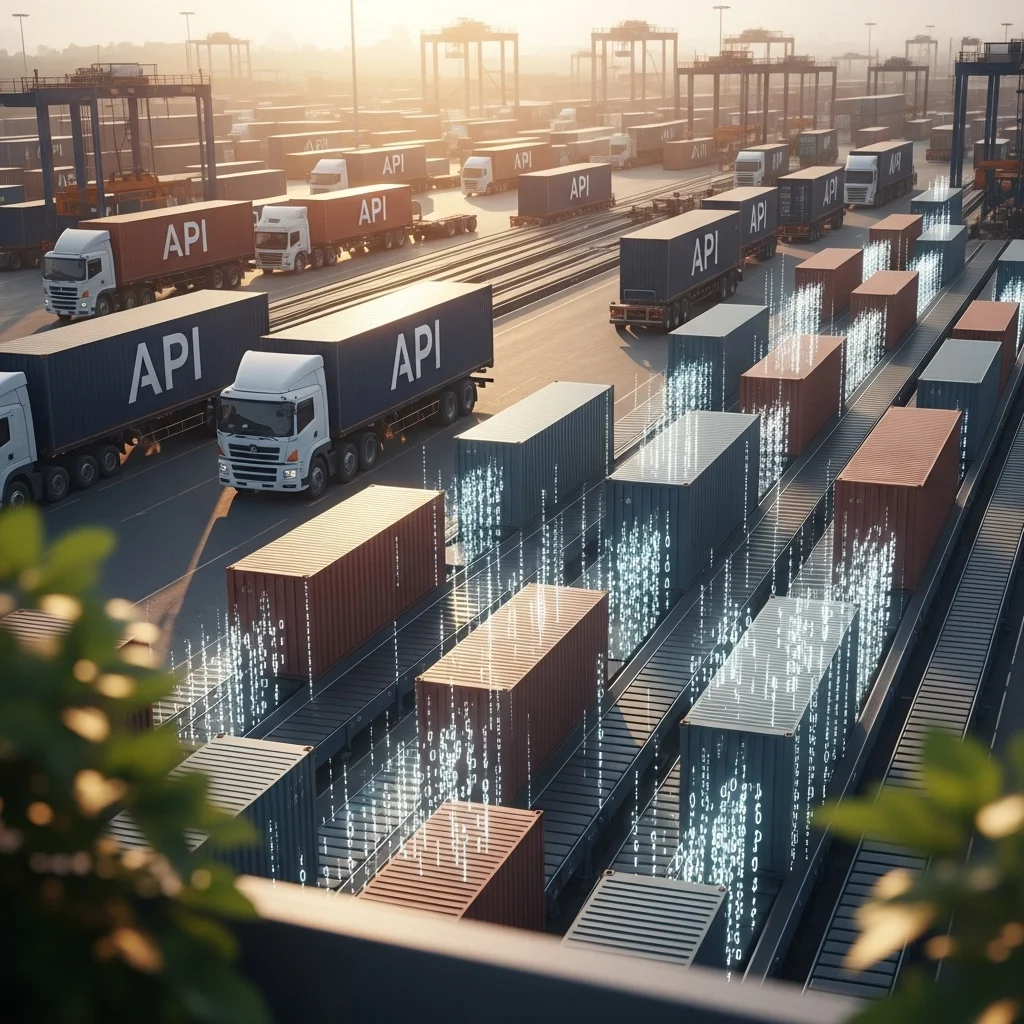Friction-free connections
Build an integration layer that grows with you and manage APIs from design to operations — not just for today, but for tomorrow as well.
Automate
Eliminate manual work with event-driven integrations, webhooks and robust APIs. Think automatic synchronisation of customer data, orders and inventory. Fewer errors, less waiting — more focus on value. And you instantly see what happened when.
Integrate
Connect CRM, ERP, PIM, WMS and data warehouses via REST, GraphQL or messaging. Clear contracts (OpenAPI) and versioning keep changes under control, even when your landscape evolves rapidly or spans multiple clouds.
Secure
Protect integrations with OAuth2, mTLS, rate limiting and policies. Make roles and permissions explicit. Log, trace and monitor — from gateway to backend. Knowing exactly who used what and why prevents incidents and supports audits.
Scale
Use an API gateway and caching for peak loads, and design for fail-over. Microservices, iPaaS or hybrid? Choose what suits your use case. In short: grow without your integrations cracking under pressure.
Like good logistics, but for data.
Like good logistics, but for data

Why this matters now
What strikes me is that integration is often the underestimated foundation. When systems really talk, teams move faster and decisions improve. And, not unimportant, errors disappear quietly.
Our perspective
In practice you often see that “quickly connecting” grows into a strategic theme: security, operations, lifecycle, ownership. So we tackle it end-to-end — from API design and governance to monitoring and version control.
Immediate impact
Less double work, consistent data and room to experiment with new services. Because those who integrate properly can innovate faster without piling up technical debt.
Key benefits at a glance:
faster data flow through real system integrations
fewer errors thanks to clear contracts and validation
scalable via gateway, caching and asynchronous patterns
more secure through policies, authentication and auditing
future-proof with versioning and solid documentation
From idea to integration that keeps working.
No rigid checklist, but a proven route we apply flexibly.

Step 1 — discovery and context.
We start with the question behind the question. Which processes stall, where is the real bottleneck, which systems need to talk? We map data flows and assign ownership per domain. Not boring, but crucial. Sometimes a simple webhook suffices, sometimes an API gateway is unavoidable. We also discuss security requirements (OAuth2, scopes, IP restrictions) and compliance.

Step 2 — API design and contracts.
Design-first works: we capture endpoints, payloads, status codes and error handling with OpenAPI (or GraphQL schemas). That contract is the single source of truth for teams. We pick naming conventions, version policy and validation rules. And yes, documentation is part of it — preferably auto-generated so it stays current. This is where you save long-term time because everyone means the same thing.

Step 3 — build and integrate.
We develop the API or integration layer with focus on idempotency, retries and time-outs. Where possible asynchronous (event-driven, queue) to absorb peak loads and decouple systems. Where needed we synchronise selectively (upserts, change data capture). A gateway or iPaaS enforces policies, throttling and observability. Sounds like a lot, but it prevents even more hassle later.

Step 4 — secure and test.
Security is not a final tick-box, yet we explicitly verify: authentication, authorisation, input validation, rate limiting and secrets management. We test functionally, contractually (via contract testing), performance and resilience (circuit breakers). Logs and traces via for instance OpenTelemetry make chain errors traceable. Pro tip: test your error paths, not just the happy flow.

Step 5 — deploy and operate.
We release in a controlled way: feature flags, staged roll-outs or canaries when critical. Monitoring and alerting are configured before traffic arrives. Versioning in place (v1, v2 side by side) and a clear deprecation process. And yes, define ownership: who responds to incidents, who updates documentation, who signs off? That avoids noise and misunderstandings.

Step 6 — evolve and optimise.
Integrations live. We measure usage, error rates and latency, and steer accordingly. Sometimes an endpoint is too busy or too broad — then we split it. Sometimes the business wants event notifications instead of polling — then we add webhooks. Small iterations keep things healthy and allow growth without rebuilds.


Shall we really make your systems talk?
We help you implement API development and integrations pragmatically — no unnecessary complexity, just robust choices. Share your challenges and landscape and we will think along with a route that works in your context. Coffee included?
Very practical: how to tackle integrations

Apply it concretely in your landscape, step by step
Start small, prove value fast. Pick one process that costs lots of manual effort (for example customer data synchronisation). Create a neat API or webhook flow for it, including logging. You will see the benefit immediately and build support.
Technical choices that often work
choose REST when resources are central; GraphQL when clients need selective data
use OpenAPI/JSON Schema for validation and mocking
deploy an API gateway for policies, rate limiting and observability
remember: async with queues or event streaming for decoupling and peaks
Documentation and discoverability
make APIs discoverable via an Exchange or developer portal
publish examples and Postman collections
document breaking changes and versions explicitly
make error codes human: provide context, correlation IDs and clear remedy
Security and privacy
OAuth2/OIDC with scopes is often the standard
store no secrets in code, use a secrets manager
log enough for audit, but mask PII
run a permission audit periodically: who really has access?
Critical view: when not to use an API?

Sometimes a simple file transfer is better (really)
Not every integration needs a real-time API. For batch reports or nightly synchronisations a file (CSV/Parquet) via secure transfer is still fine. Fewer moving parts, less maintenance. That said, APIs often become more convenient later for near real-time insights.
Avoid unnecessary complexity
using an iPaaS for one simple link is overkill
microservices without clear boundaries create more integration work
do not start with five authentication variants; keep it consistent
beware “integration by exception” — standardise where possible
Vendor lock-in and exit strategy
abstract platform-specific features in your integration layer
define contracts in open standards
ensure data export and key rotation are scriptable
write the document “how do we ever migrate away from this?” before going live
Looking ahead: event-driven everything

Integrate with events, APIs as the gateway
We see a clear shift to event-driven architectures. Systems publish events, others react asynchronously. APIs remain important as façade and for commands, but events decouple and scale more elegantly. Your landscape becomes more resilient and easier to adapt.
What this means in practice
combine REST/GraphQL for queries with events for mutations and notifications
use a schema registry and version your events
add idempotency and retries to avoid duplicates
enable end-to-end observability: tracing, metrics and structured logs
AI and integrations
AI-driven mapping and data enrichment are becoming normal
policy and governance around LLM APIs need extra attention (rate limits, PII)
apply a gateway policy set to LLM endpoints just like your core APIs
measure continuously: latency, cost, error profiles — keep iterating
Frequently asked questions about API development and integrations
Answers that genuinely help you move forward
How do I decide between REST and GraphQL? 🤔
It depends on the shape of your data and your clients. REST works well when resources and standard CRUD activities are central. GraphQL is handy when clients have variable data needs and want to reduce chatty calls. As mentioned earlier: choose what is simplest for your use case, not what sounds trendy.
Can you connect our systems without a complete rebuild? 🙂
Often yes. By building an integration layer that respects existing systems — and using webhooks, messaging and a gateway — you rarely need to change anything under the bonnet. Legacy and cloud can coexist nicely as long as contracts and security are clear.
How do we stop integrations becoming overly complex? 😅
Start design-first (OpenAPI), standardise policies in the gateway and pick one auth method. Work with a minimal viable integration and iterations. Make ownership explicit: who manages the API, who decides on versions, who responds to incidents? Without that, complexity quietly grows.
What pitfalls do you see time and again? 🧩
Endpoints that are too broad (all-in-one), no version policy, missing monitoring, and no error handling for downstream time-outs. Also popular: documentation that lags behind. Quick tip: automate documentation and contract tests so you are not dependent on stray wikis.
How do you secure APIs properly? 🔐
Think in layers: authentication (OAuth2/OIDC), authorisation (scopes/roles), input validation, rate limiting and mTLS where needed. Encrypt secrets, rotate keys and log with correlation IDs. And test abuse scenarios too (fuzzing, brute force). It may feel strict, but it pays off twice over.
Is an iPaaS always required for integrations? 🧰
No. It is useful with many links, hybrid patterns or governance demands. But for simple flows a lightweight integration service or direct API is perfectly fine. Choose what fits — over-engineering is costly and fragile.
What if a supplier only provides CSV files? 📄
No problem. Orchestrate a secure ETL route and publish the result via an internal API. This keeps the outside modern while the source can remain “old-school”. Later you can modernise step by step without a big bang.
How do you ensure teams reuse APIs instead of building new ones? 🔁
Make them discoverable. A developer portal or Exchange with search, samples and clear ownership helps enormously. Add analytics so you can see which APIs are used — and which are duplicated. Reuse must be easy and visibly rewarding.
When should you choose synchronous calls and when events? 🧭
Synchronous when you need immediate feedback (think payment status). Asynchronous for peaks, long-running tasks or low coupling. A hybrid model (request via API, processing via event) often works best, especially with legacy at the back end.
Can you also monitor and manage our integrations? 👀
Absolutely. Observability is not an afterthought. With metrics, tracing and alerting you spot anomalies early and can act precisely. That said, your own team remains key: together we divide roles and safeguard knowledge so you are not dependent on a single party.










.webp)
